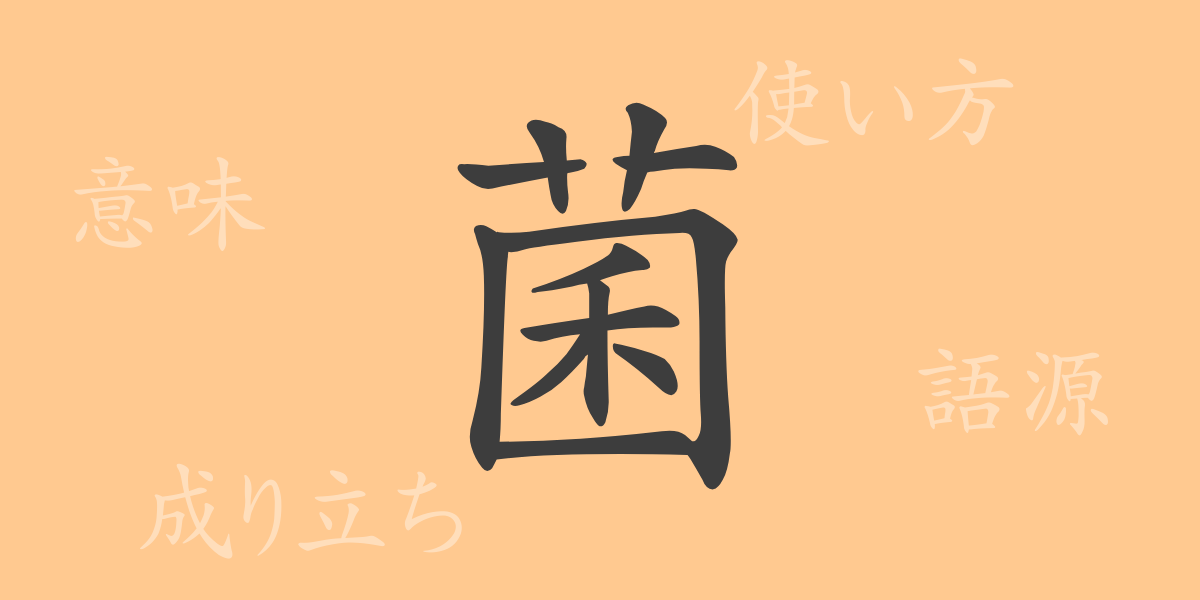The world of microorganisms, though invisible to the naked eye, deeply impacts our lives. The kanji “菌” (きん) is used in various contexts such as health, disease, and fermentation, making it an unavoidable part of daily life. This article delves into the Japanese common kanji “菌” (きん), exploring its origin, meaning, usage, pronunciation, and the idioms and expressions related to it.
Origin of 菌 (きん)
The kanji “菌” (きん) originates from classical Chinese texts. In ancient Chinese natural philosophy, “菌” (きん) represented minute elements involved in the generation and transformation of all things. In Japan, the term began to be used to refer to microorganisms when bacteriology was introduced from the West during the Meiji era.
Meaning and Usage of 菌 (きん)
The kanji “菌” (きん) refers to microorganisms in general, including bacteria, fungi, and yeast. These organisms are classified into various groups based on their ecology and morphology, but “菌” (きん) generally denotes all invisible life forms, including harmful bacteria and beneficial microbes that promote fermentation.
Pronunciation, Stroke Count, and Radical of 菌 (きん)
The kanji “菌” (きん) has several key characteristics.
- Pronunciation: The on’yomi (Chinese reading) is “きん,” and there is no kun’yomi (Japanese reading).
- Stroke count: “菌” (きん) has a total of 11 strokes.
- Radical: The radical is 艸 (くさかんむり), which typically relates to plants.
Idioms, Expressions, and Proverbs Using 菌 (きん)
Many idioms and expressions containing “菌” (きん) are related to microorganisms. For example, “細菌” (さいきん) refers to bacteria that cause diseases, “菌類” (きんるい) is a term for fungi such as mushrooms and molds, and “菌糸” (きんし) denotes the thread-like structures that make up the body of fungi. These terms are frequently used in scientific and medical fields.
Conclusion on 菌 (きん)
The kanji “菌” (きん) represents microorganisms that play crucial roles in our health, diet, and the Earth’s ecosystems. Its usage spans medicine, biology, and food science, with ongoing advancements in microbiological research. Although invisible, the world of “菌” (きん) is indispensable to our lives, and this article aims to enhance your understanding of this fascinating topic.

























